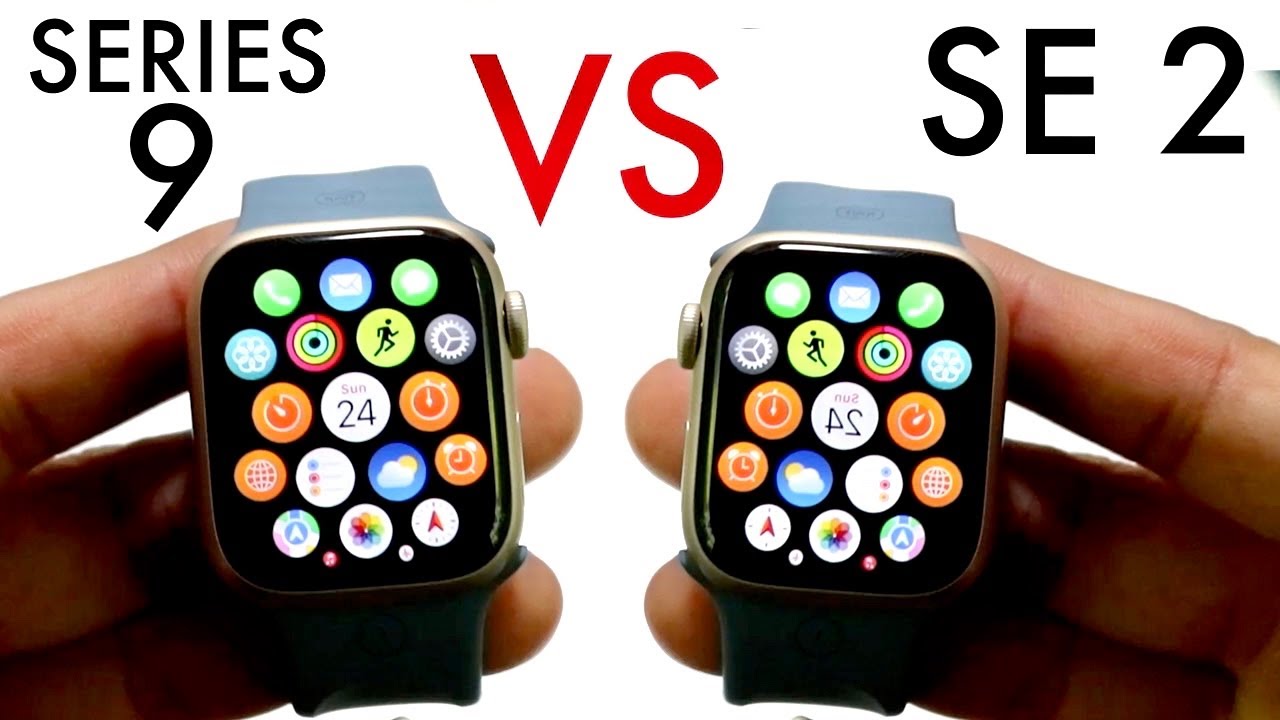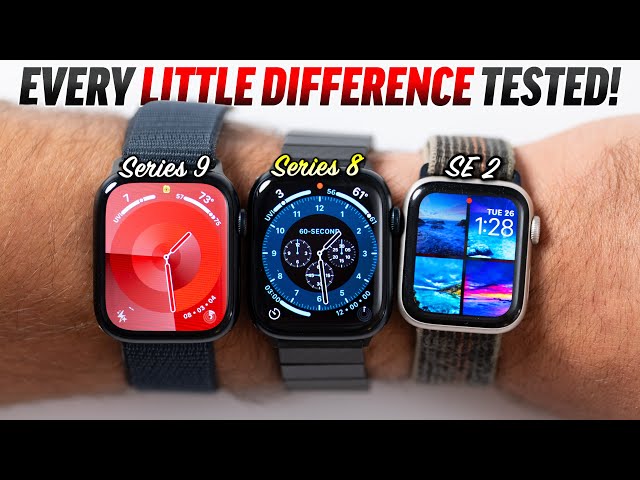Well now, if you’re wonderin’ whether you should stick with your Apple Watch SE 2nd Gen or go for the fancy Apple Watch Series 9, let me tell ya, it ain’t as hard as it might seem. There’s a heap of differences between them, but don’t worry, I’ll make it easy for ya to understand. You see, the Series 9 got a lot of new tricks up its sleeve that might make ya want to trade up. Let me walk you through ’em.

First thing’s first – the screen! Now, the Series 9’s got a much bigger screen than the SE 2nd Gen. It’s got more space for all them little things you need to see – like your messages, health info, and even maps. And let me tell you, that bigger screen ain’t just for show, it’s a lot easier to read, especially if your eyes aren’t what they used to be. You can also make the text bigger, so you ain’t squintin’ at your watch all the time.
And here’s the real kicker: The Series 9 has this fancy “always-on” display. That means, instead of havin’ to raise your wrist or press a button to see the time or your notifications, it’s just always there. You don’t have to do a thing! For some folks, that can be a real life-saver, especially if you got trouble with mobility or arthritis in your hands. Makes it real easy to check stuff with a quick glance.
Now, let’s talk about the heart of the watch – the processor. The Series 9 comes with a brand new chip. Now, I ain’t no tech expert, but let me tell ya, that old chip in the SE 2nd Gen is a few years behind. The newer chip in the Series 9 is faster, which means your watch will run smoother, open apps quicker, and work more efficiently. It’s like drivin’ a new tractor instead of one that’s been in the barn for years. Things just work better!
Health features – now, this is where the Series 9 really shines. If you care about your health, or if you just wanna make sure you’re stayin’ on top of things, the Series 9 has a bunch of health features that the SE 2nd Gen just don’t got. For starters, you got the temperature sensor. That helps you keep track of your body temperature, which is important, especially if you’re tryin’ to figure out if you’re comin’ down with something. And let’s not forget the blood oxygen sensor and the ECG. These can help you monitor your heart and lung health, which can be real handy if you got a history of health problems. In fact, in some countries, it can even be used to detect if you got some serious issues. That’s somethin’ the SE 2nd Gen just can’t do.
And, while we’re at it, the Series 9 has the option for cellular connectivity. This means you don’t need to have your phone with you all the time. You can make calls, send texts, and even stream music without your phone bein’ around. It’s like havin’ a little bit of freedom! Now, the SE 2nd Gen has a version that can connect to your phone, but it don’t do the same as the cellular model of the Series 9. If you’re the type who likes to leave the house without your phone, this might be a good reason to upgrade.

But I gotta tell ya, if you ain’t into all these fancy features and just want a watch that tells the time and tracks basic stuff like steps and heart rate, the SE 2nd Gen still gets the job done. It’s a simpler, more affordable option, and some folks don’t need all them extra bells and whistles. If you’re watchin’ your pennies, that’s still a mighty fine choice.
So, what’s it come down to? Well, if you want a watch that’s a bit more high-tech, with a bigger screen, faster performance, more health features, and the option to go phone-free, the Apple Watch Series 9 is the one for you. But, if you’re just lookin’ for a solid, no-frills smartwatch that’ll do the basics, then the SE 2nd Gen might be enough to keep ya happy. It’s all about what you need and what your wallet can handle.
Hope this helped ya make up your mind! Now, whichever one ya choose, you’re gonna be rockin’ one mighty fine piece of technology, no doubt about it.
Tags:[Apple Watch Series 9, Apple Watch SE 2nd Gen, smartwatch comparison, Apple Watch health features, always-on display, larger screen, faster processor, blood oxygen sensor, temperature sensor, ECG, cellular connectivity]































